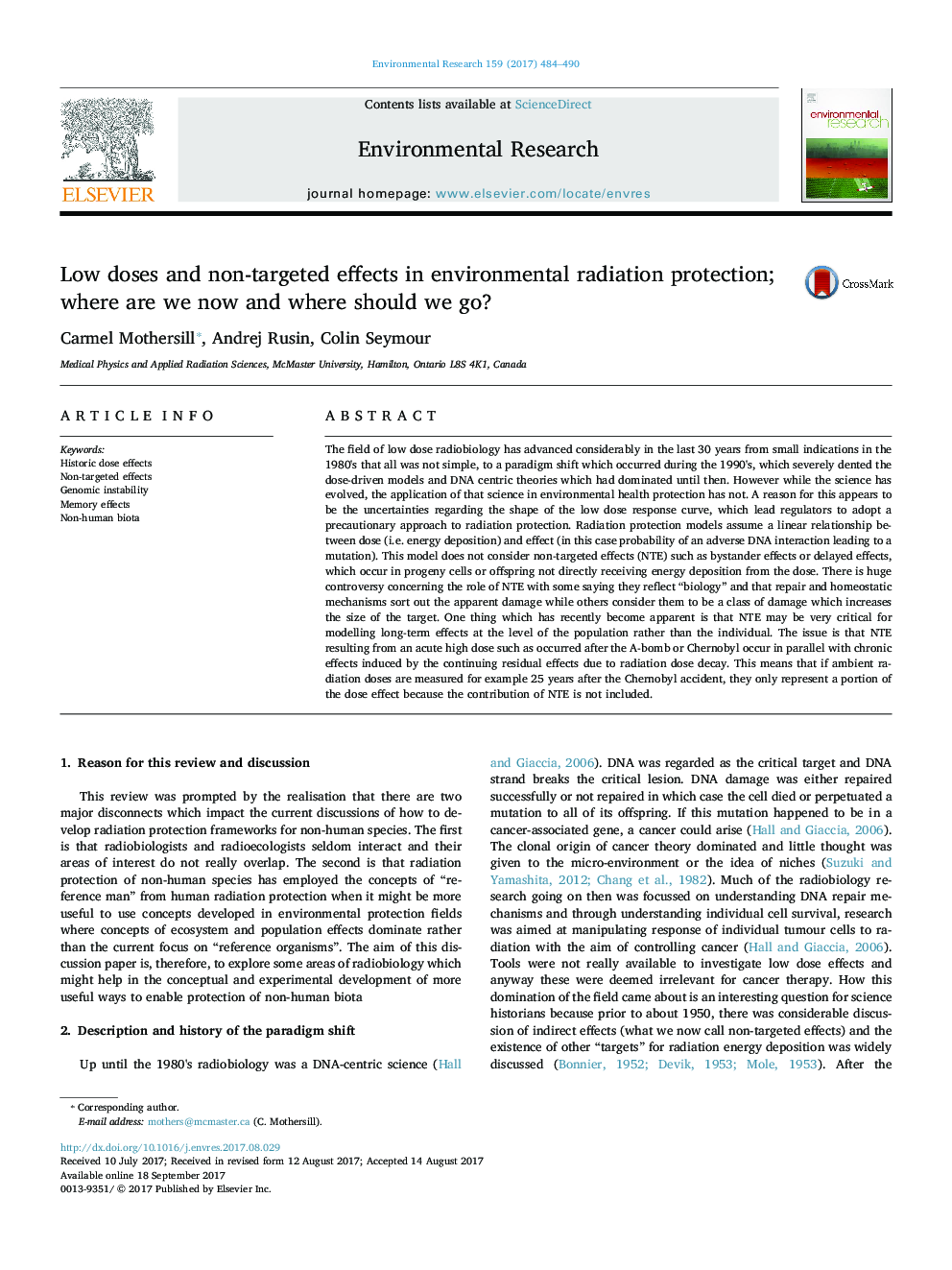| کد مقاله | کد نشریه | سال انتشار | مقاله انگلیسی | نسخه تمام متن |
|---|---|---|---|---|
| 5756140 | 1622544 | 2017 | 7 صفحه PDF | دانلود رایگان |
عنوان انگلیسی مقاله ISI
Low doses and non-targeted effects in environmental radiation protection; where are we now and where should we go?
ترجمه فارسی عنوان
دوز کم و اثرات غیر هدفمند در حفاظت از تابش محیط زیست؛ ما کجا هستیم و کجا باید برویم؟
دانلود مقاله + سفارش ترجمه
دانلود مقاله ISI انگلیسی
رایگان برای ایرانیان
کلمات کلیدی
اثرات دوزهای تاریخی، اثرات غیر هدفمند، بی ثباتی ژنومی، اثرات حافظه، بیوتکنولوژی غیر انسانی،
موضوعات مرتبط
علوم زیستی و بیوفناوری
علوم محیط زیست
بهداشت، سم شناسی و جهش زایی
چکیده انگلیسی
The field of low dose radiobiology has advanced considerably in the last 30 years from small indications in the 1980's that all was not simple, to a paradigm shift which occurred during the 1990's, which severely dented the dose-driven models and DNA centric theories which had dominated until then. However while the science has evolved, the application of that science in environmental health protection has not. A reason for this appears to be the uncertainties regarding the shape of the low dose response curve, which lead regulators to adopt a precautionary approach to radiation protection. Radiation protection models assume a linear relationship between dose (i.e. energy deposition) and effect (in this case probability of an adverse DNA interaction leading to a mutation). This model does not consider non-targeted effects (NTE) such as bystander effects or delayed effects, which occur in progeny cells or offspring not directly receiving energy deposition from the dose. There is huge controversy concerning the role of NTE with some saying they reflect “biology” and that repair and homeostatic mechanisms sort out the apparent damage while others consider them to be a class of damage which increases the size of the target. One thing which has recently become apparent is that NTE may be very critical for modelling long-term effects at the level of the population rather than the individual. The issue is that NTE resulting from an acute high dose such as occurred after the A-bomb or Chernobyl occur in parallel with chronic effects induced by the continuing residual effects due to radiation dose decay. This means that if ambient radiation doses are measured for example 25 years after the Chernobyl accident, they only represent a portion of the dose effect because the contribution of NTE is not included.
ناشر
Database: Elsevier - ScienceDirect (ساینس دایرکت)
Journal: Environmental Research - Volume 159, November 2017, Pages 484-490
Journal: Environmental Research - Volume 159, November 2017, Pages 484-490
نویسندگان
Carmel Mothersill, Andrej Rusin, Colin Seymour,
